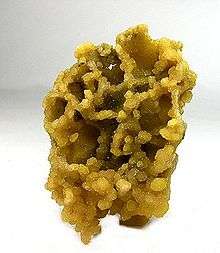Cadmium pigments
| Cadmium Orange | |
|---|---|
| Hex triplet | #ED872D |
| sRGBB (r, g, b) | (237, 135, 45) |
| CMYKH (c, m, y, k) | (0, 43, 81, 7) |
| HSV (h, s, v) | (28°, 81%, 93%) |
| Source |
The Mother of All HTML Color Charts Orange cadmium pigment |
|
B: Normalized to [0–255] (byte) H: Normalized to [0–100] (hundred) | |
| Cadmium Red | |
|---|---|
| Hex triplet | #E30022 |
| sRGBB (r, g, b) | (227, 0, 34) |
| CMYKH (c, m, y, k) | (0, 100, 85, 11) |
| HSV (h, s, v) | (351°, 100%, 89%) |
| Source |
The Mother of All HTML Color Charts Red cadmium pigment |
|
B: Normalized to [0–255] (byte) H: Normalized to [0–100] (hundred) | |
| Cadmium Green | |
|---|---|
| Hex triplet | #006B3C |
| sRGBB (r, g, b) | (0, 107, 60) |
| CMYKH (c, m, y, k) | (100, 0, 44, 58) |
| HSV (h, s, v) | (154°, 100%, 42%) |
| Source | The Mother of All HTML Colo(u)r Charts |
|
B: Normalized to [0–255] (byte) H: Normalized to [0–100] (hundred) | |
| Cadmium Yellow | |
|---|---|
| Hex triplet | #FFF600 |
| sRGBB (r, g, b) | (100, 96, 0) |
| CMYKH (c, m, y, k) | (0, 4, 100, 0) |
| HSV (h, s, v) | (58°, 100%, 100%) |
| Source |
The Mother of All HTML Colo(u)r Charts Yellow cadmium pigment |
|
B: Normalized to [0–255] (byte) H: Normalized to [0–100] (hundred) | |
Cadmium pigments are a class of pigments that have cadmium as one of the chemical components. Most of the cadmium produced worldwide has been used in the production of rechargeable nickel-cadmium batteries — themselves being replaced by other rechargeable nickel-chemistry cell varieties like NiMH cells[1] — but about half the remaining consumption of cadmium, which is about 2,000 tons annually, is used to produce colored cadmium pigments. The principal pigments are a family of yellow/orange/red cadmium sulfides and sulfoselenides as well as compounds with metals other than cadmium.[2]
Artists' paints


Brilliantly colored, with good permanence and tinting power, cadmium yellow, cadmium orange and cadmium red are familiar artists’ colors, as well as being frequently employed as architectural paints, since they can add life and vibrancy to renderings. Their greatest use is in the coloring of plastics and specialty paints which must resist processing or service temperatures up to 3,000 °C (5,430 °F).[3] The color-fastness or permanence of cadmium requires protection from a tendency to slowly form carbonate salts with exposure to air. Most paint vehicles accomplish this, but cadmium colors will fade in fresco or mural painting.
The following are commonly used as pigments in artists' paints:
- Cadmium yellow is cadmium sulfide (CdS). C.I. Pigment Yellow 37
- Cadmium sulfoselenide is a solid solution of CdS and CdSe. Depending on the S/Se ratio, C.I. Pigment Orange 20 or C.I. Pigment Red 108 is obtained.
- Zinc cadmium sulfide is a greenish, solid solution of CdS and ZnS. C.I. Pigment Yellow 35.
- Cadmium yellow is sometimes mixed with viridian to give a bright, pale green mixture called cadmium green.
When first introduced, there were hardly any stable pigments in the yellow to red range, with orange and bright red being very troublesome. The cadmium pigments eventually replaced compounds such as mercury sulfide (the original vermilion) with greatly improved light-fastness.
Cadmium pigments are known for excellent light-fastness, although the lighter shades can fade in sunlight.[4] A cadmium yellow paint was frequently used on Bob Ross' TV show, The Joy of Painting.
Safety
Cadmium sulfide is not very toxic (LD50 > 5000 mg/kg) when used as a pigment, although acute exposure to cadmium vapors from welding is harmful.[2]
The cadmium pigments have been partially replaced by azo pigments. These have significantly inferior lightfastness,[5] but still good,[6] and they have the advantage of both being cheaper and non-toxic. In some countries, consumer activists such as Michael Vernon in Australia were successful in banning the use of cadmium pigments in plastics that could be used for toy manufacture, owing to the toxicity of cadmium.
See also
References
- ↑ "MEPs Ban Cadmium from Power Tool Batteries and Mercury from Button Cells." European Parliament.
- 1 2 Hugo Müller, Wolfgang Müller, Manfred Wehner, Heike Liewald "Artists' Colors" in Ullmann's Encyclopedia of Industrial Chemistry 2002, Wiley-VCH, Weinheim. doi:10.1002/14356007.a03_143.pub2
- ↑ "Cadmium Pigments". Retrieved 30 November 2010.
- ↑ Michael Douma, curator (2008), "History of Cadmium Yellow", Pigments Through the Ages, retrieved 2013-07-31
- ↑ Tony Johansen (2006-05-06), "Yellow", Making Artist's Paint, retrieved 2013-07-31
- ↑ Jill (2010-01-06), "Yellow", Art School at Home (blog), retrieved 2013-07-31
Further reading
- Fiedler, I., Bayard, M.A., Cadmium Yellows, Oranges and Reds, in Artists’ Pigments. A Handbook of Their History and Characteristics, Vol. 1: Feller, R.L. (Ed.) Oxford University Press 1986, p. 65 – 108
External links
- National Pollutant Inventory - Cadmium and compounds
- "Cadmium yellow". Pigments through the Ages. WebExhibits.
- "Cadmium orange". Pigments through the Ages. WebExhibits.
- "Why are cinnabar, vermilion, and cadmium orange colored?". Causes of Color. WebExhibits.
- Cadmium yellow, ColourLex
- Cadmium orange, ColourLex
- Cadmium red, ColourLex